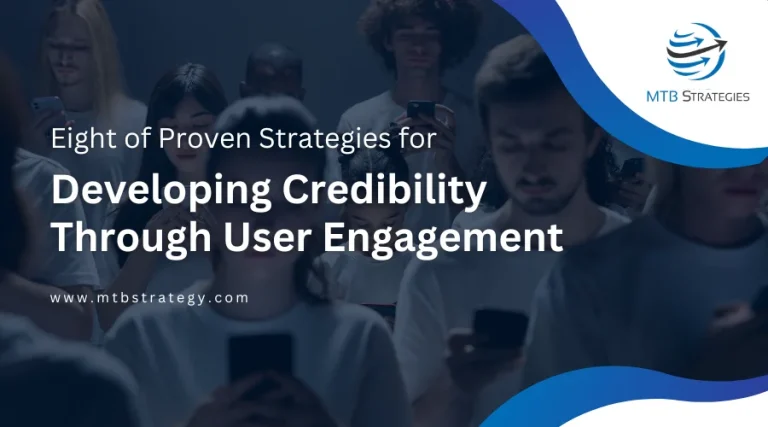Even though your firm has a well-established blog, do you have a well-defined blog strategy? Your posts consistently appear on the first page of search engine results for various keywords because you provide high-quality material. Right now, everything seems OK.
But in Google Analytics, you’ll discover a pattern that’s disturbingly prevalent for companies of all sizes: your blog posts receive a lot of traffic, but no conversions are being made!
In other words, no purchases, no subscriptions to email lists or webinars, and no downloading of white papers. Nothing at all.
It’s time to get more goal-oriented if this is you! Consider the success of your blog as a tool to assist in implementing your marketing plan. If you want it to have a good impact on your business, you need a strategy for your blog. Here is how you do it:
Creating a Blog
Most bloggers are under the impression that their lead generation landing pages will rank and convert on their own if they write relevant content and use a simple blog promotion strategy. It’s not as simple as it appears. The standard is so high that most businesses cannot meet it. The development and implementation of a robust content strategy takes time.
Set Your Objectives
How can you build a blog strategy that will work for you and your business? To get started, figure out what your marketing team hopes to accomplish via blogging. It could include:
- Boosting your search engine rankings for particular keywords.
- Increasing your online exposure at every stage of the sales process
- Awareness-raising for a specific campaign or promotional offer
- Making it easier for clients and potential customers to find the information they need.
- Develop a reputation as an expert in various subject areas within your industry.
- Market research is evaluating the popularity of multiple topics to understand your target market.
- Getting someone to purchase after reading your blog
- Other (e.g., email subscribers, social shares, ebook downloads, etc.)
Establish Conversion Goals
Finding a solution to incorporate conversions into your long-term goals when your blog has so many non-conversion plans can be challenging. It is more difficult because conversion objectives vary greatly depending on the price and industry. Your conversion standards will be higher if you have a quick sales cycle and a cheap price point.
To know how well your business blog converts, look at the overall conversion rate. Include any industry benchmarks, revenue targets, and non-conversion goals you’ve identified through competitor research.
Keep your conversion rate variable if you don’t have enough data to make an educated guess. It’s a simple matter of determining the percentage of your posts that will be focused on converting visitors into customers. Then, monitor the performance of each article that aims to convert visitors into customers. To improve your conversion rate, you should look at posts with a higher conversion rate.
Create Content for Your Conversion Funnel
There are three separate buyer personas in your blog marketing strategy: awareness, contemplation, and decision. There will be many educational and content requirements for people at various periods in their lives. Depending on your conversion funnel, you’ll want to focus on different types of conversions.
Your new blog strategy should include material for each sales funnel stage as you build it out. Decide on your conversion and micro-conversion targets next.
Pick Customer Demographics & Target Them
It is time to work on improving your rankings and increasing the number of conversions. The first step is to identify your target audience. The “awareness funnel” classification is less thorough and personality-driven. Three buyer personas will spread throughout the awareness funnel.
Data from your website, search engine, social media, email, customer service, and sales can be used to classify the many categories of people who use your product or service. Your customer service and sales personnel will understand your clients’ personalities, problems, and stories more than analytics alone can deliver.
Once you’ve identified your target, you can tailor your approach to each persona’s unique needs and interests. For each persona, produce more detailed material in addition to your more generalized information. To increase conversions, focus on your blog content strategy’s benefits and solutions that matter most to your target audience. Reduce the bounce rate by making visitors feel a connection to your brand.
Develop a Content Calendar
Using a content calendar, you can ensure that everyone in your team works on the right things at the correct times. Constructing a system that works for the team and includes other departments will inevitably drive rankings and conversions. Create buzz about product launches when they happen, offer solutions during different holidays and seasonal items, and handle life events such as graduation or the back-to-school frenzy with seasonal items and promotions.
Think About Topic Clusters & Pillar Pages
It isn’t just for SEO purposes that the use of topic clusters and pillar pages is beneficial. They’re also critical to developing trust in a B2B content marketing strategy. Some of your target personas may not respond to even one post. But if they keep reading and learn that you’re an expert in the field they’re interested in, they’ll become more and more confident in your abilities.
To keep your readers engaged, link to other posts comparable to yours. Using categories and tags, categorize and tag your posts on your blog. A simple navigation style or an image-driven navigation system can be used to link to the many categories on the side of the page.
Use Conversion-Worthy Content
Preparing and optimizing your content are critical phases in the content creation process. A blogging approach that ranks and converts ultimately depends on the quality of the information it contains. The quality of your material is essential. It must be excellent.
Include text and visual information in your blog posts to keep things interesting. Additionally, your design team should be involved in creating interactive elements and other content for the blog. You’ll need to get some top-notch authors on board. Ensure that your readers have adequate time and a cause to care about each post. They won’t be able to write the engaging, fun, or significant entries they are capable of if the blog becomes a routine and mechanical process for them.
Utilize Call-to-Action Elements
Every post needs a clear call to action that is visually appealing and easy to understand. “Buy now!” and “start your free trial!” aren’t the only ways to get people to do what you want. In addition, depending on the content and funnel level, you can also include CTAs that direct the visitor to more blog articles or resources, case studies, webinars, or individual goods. Alternatively, you could strike up a conversation, issue a challenge, or point them toward other resources.
Optimize for Conversion
Every post needs a clear call to action that is visually appealing and easy to understand
Without conversion optimization, your blog strategy won’t work. Add a lot of visual callouts and CTAs, but make sure they go with the blog content and follow UX best practices. Check every link to make sure it works. And check each post carefully for grammar and spelling mistakes that could hurt trust. Keep the design of the blog clean and up-to-date.
It’s not a mistake that there are so many CTAs. It’s a great way to help our readers remember what Terakeet is and what we do. Mixing things up is the key. Include more than one call-to-action element on a page. Test CTAs relevant to the current situation and more basic CTAs. The longer our post, the more CTAs we include. It not only gives readers more chances to change their minds. It also makes the post more interesting and breaks up the text.
. “Buy now!” and “start your free trial!” aren’t the only ways to get people to do what you want. In addition, depending on the content and funnel level, you can also include CTAs that direct the visitor to more blog articles or resources, case studies, webinars, or individual goods. Alternatively, you could strike up a conversation, issue a challenge, or point them toward other resources.
Monitor Your Progress
Your corporate blog strategy should be evaluated using the initial conversion targets you set as a starting point. You’ll need to consider this when measuring each post’s conversion rate if your sales cycle is long.
Don’t simply look at each post’s conversions; look at the entire conversion chain. Regardless of how often a user returns to the post, this will take into account the first time they connect with it, even if they return and convert through another channel. Despite their best efforts, conversion paths aren’t always ideal. They are, nonetheless, an essential source of information. Start keeping track of which posts do well in terms of conversions. Then, adjust your plan following your findings.
Conclusion
By including conversions in your SEO strategy, you can ensure that all of the organic traffic you get is useful. Blog posts lead to different conversions at each stage of the funnel. So, you should separate your conversion data into groups before discussing conversion rates.
Then, as you keep track of each post’s conversion rate, write down the long-tail keywords that bring people to that post. Track each of these things separately and compare the conversion rates of your keywords over time. Find patterns in the kinds of searches that bring in people ready to buy.
At the same time, please keep track of which keywords bring in the most traffic and how many people click on them. If you need to, you can hire or outsource a CRO expert who can give you detailed suggestions, run A/B tests, and keep an eye on how people use your site.
Last but not least, have fun! Yes, for sure. One way to ensure your blog posts get read is to provide the people who write them are interested in the subject. You’ll be able to hit that one out of the park if you have the right tools and a smooth production process.






